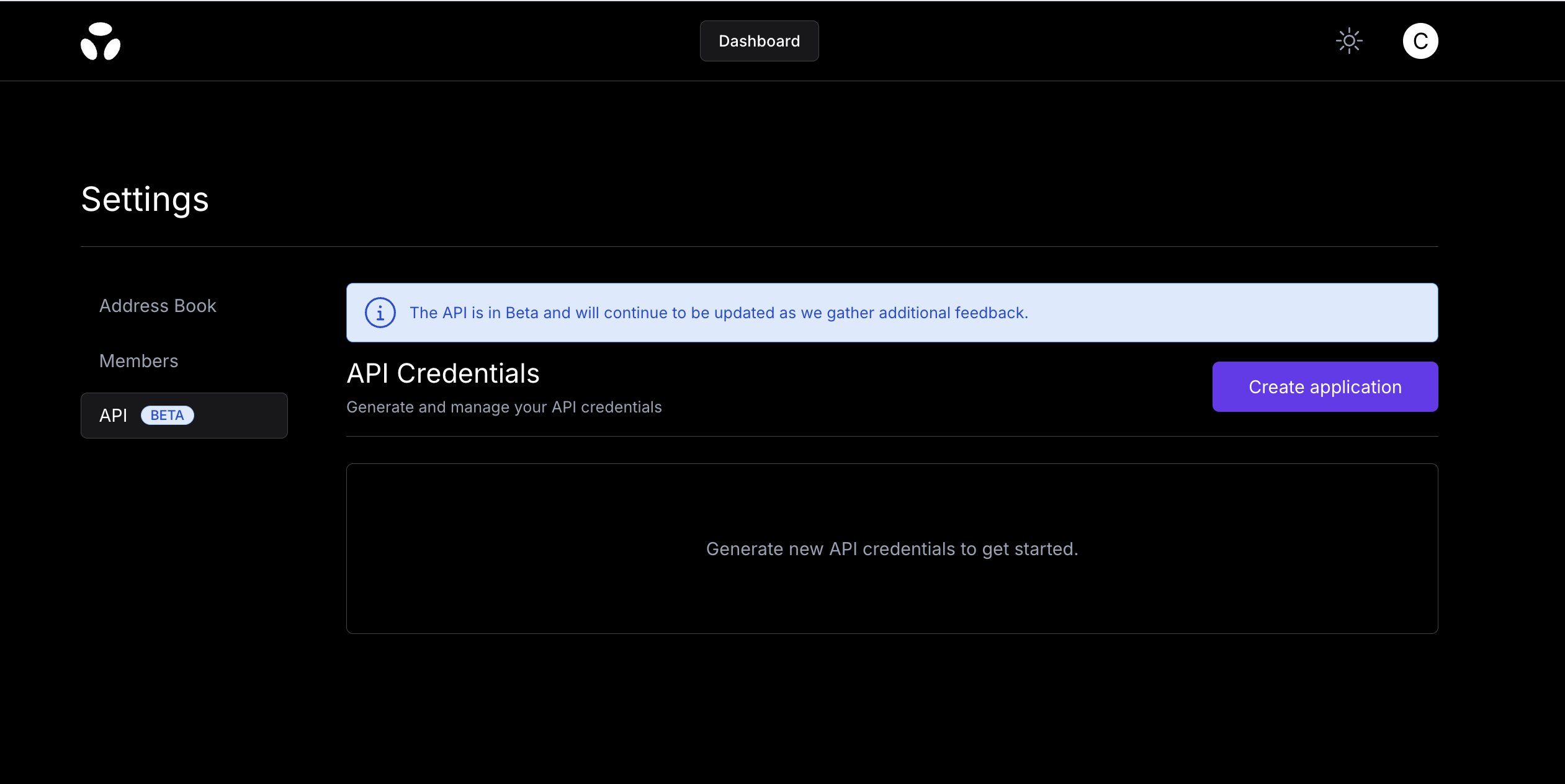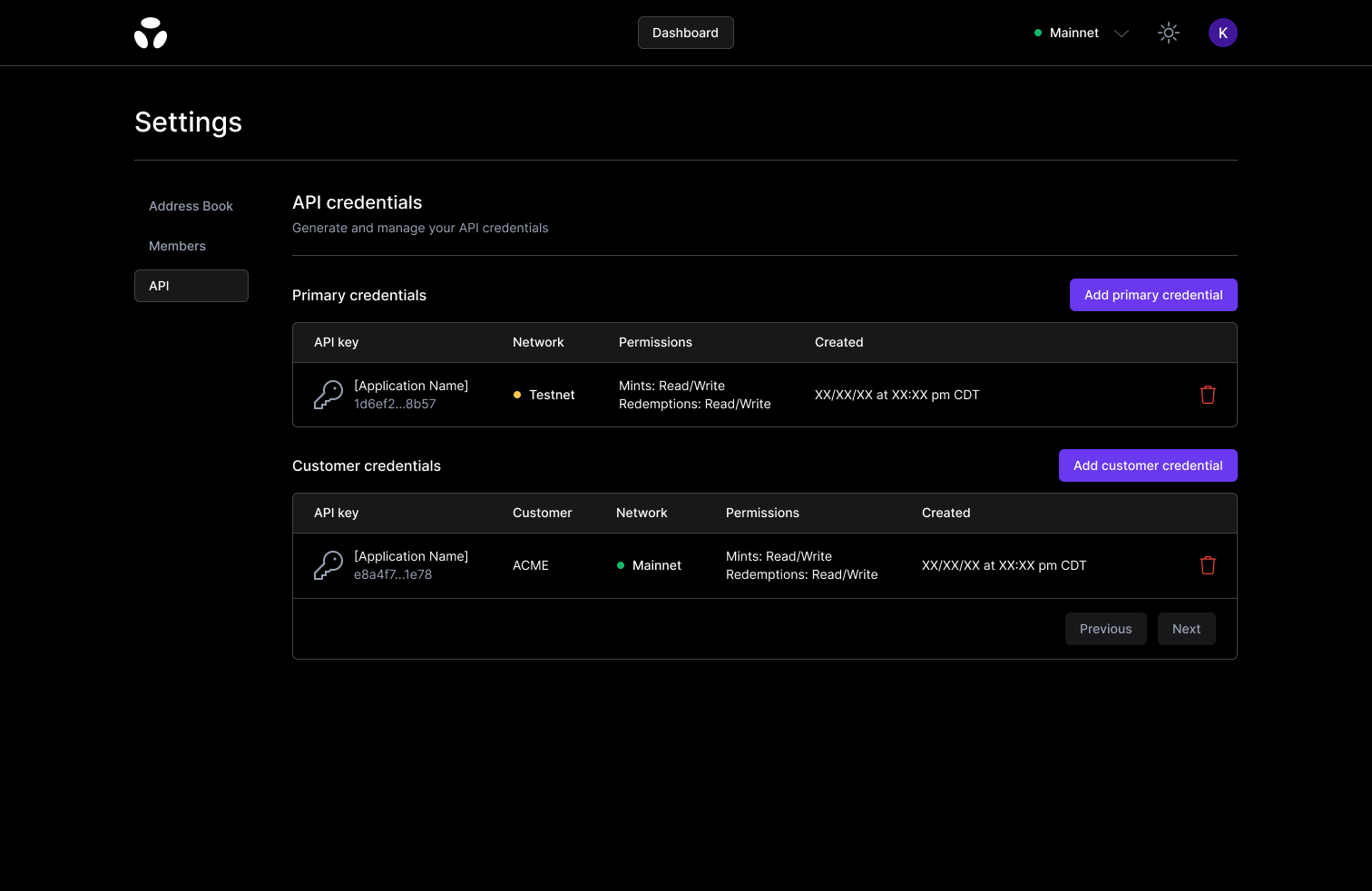Authentication
The Brale API uses Bearer Authentication and API keys to authenticate your requests.
API Keys
Your ability to authenticate to the API is granted through an API Key associated with an Application. Applications are specific to testnet or mainnet access, and have a specific set of permissions. You can create multiple API applications within the dashboard, each assigned specific API scopes.
Create API Credentials
Create an application on the Settings page in the Dashboard. Brale will make your API key available only once. Please save the key in a secure location.

Obtain an Access Token
Brale uses OAuth2 with the client_credentials grant type for secure access to our APIs. Sending a request to the Auth endpoint will return a bearer token to be used on all subsequent calls. The response will include the number of remaining seconds that the token is valid before a new one will need to be retrieved.
The Authorization header uses Basic HTTP Authentication. This requires encoding your client_idand client_secret into a Base64 format.
To generate the Base64 encoded string, you can use a command-line tool like base64 or an online encoder. Ensure that your client_id and client_secret are separated by a colon (:) and then encoded. This encoded string will be used in the Authorization header.
curl --request POST \
--url https://auth.brale.xyz/oauth2/token \
--header 'Authorization: Basic ${BASE_64_OF(client_id:client_secret)}' \
--header 'Content-Type: application/x-www-form-urlencoded' \
--data grant_type=client_credentials
Authenticated Requests
Include the bearer token in the Authorization header of your API requests.
curl --request GET \
--url https://api.brale.xyz/tokens \
--header 'Authorization: Bearer OiVz67P7emAx0JUJRmYHP4pI-nSlYQn7ivTQE.A-tXeGnuzQBRSjq9QNGQXZ4aRl7Rbm8wY'

Updated 3 months ago
